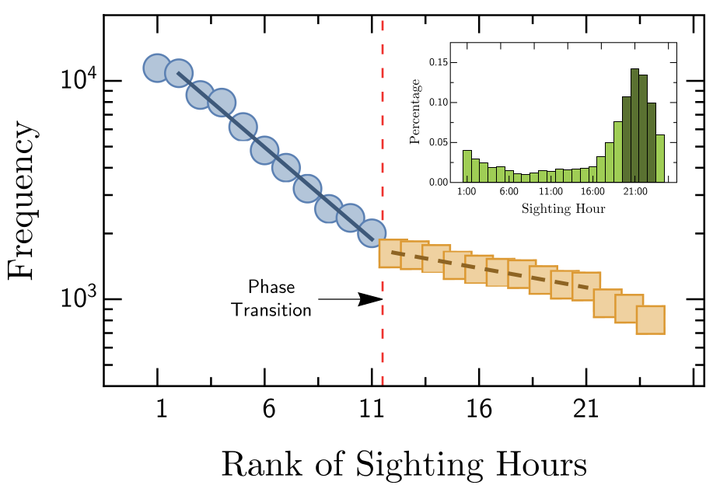
Abstract
There are a growing number of large databases online. In this study, we used data from 80,332 cases of UFO sightings reported from 1906 to 2014 as a tool for investigating the human behavior in reporting events and how a time lag influences the patterns of reporting events. We identified that new reports were sensitive to media broadcasting and daytime hours. This last pattern was ruled by different reporting mechanisms distinguishing daytime and night hours with an evident phase transition in the rank distribution. Also, we verified that more than 41% of the sightings reported supposedly happened in perfect o’clock hours, indicating that observers have a strong preference for rounder numbers, a result that could be relevant for investigations of experimental data collected by humans in mechanical and analog measuring instruments. This rounding pattern also led to different mechanisms underlying the rank distribution of round or non-round minutes. Finally, we found numerical evidence that observers have an urgency in reporting the sighting. The probability distribution of reporting time lag revealed a critical reporting lag of 83.5 days after the contact. Additionally, we identified that the month-day rounding mechanism varies with time being connected to the critical reporting lag obtained.